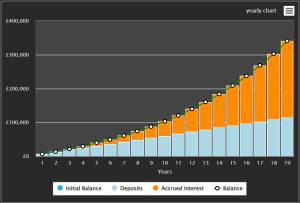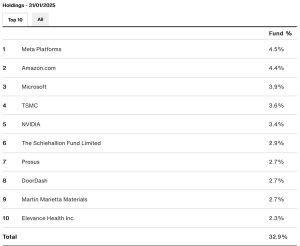On the surface of things, penny stocks appear attractive due to their cheap price. However, I’m smart enough to understand the difference between value and price.
Let me explain my approach to small caps, and give an example of a former penny stock currently on the FTSE 100.
Things I look out for
What does the business do, and how can it make money and grow? Is the business offering something entirely new to market? What is its unique selling point for its customers that could help grow earnings, and potentially provide shareholder value? The firm in question may be simply looking to change the game for an existing product or service. However, due to their smaller stature, small-cap companies often come across challenges.
One of the biggest obstacles that small caps face is financial might. A small cap won’t have the same flexibility or strength on their balance sheet that a larger established firm generally has. This can often lead to financial troubles, and in many cases, they fail. Many of these firms borrow to fund growth, and this debt can often become a huge insurmountable burden.
Finally, when a small cap comes along that is a potential money spinner, there’s always a chance that a larger firm in the same industry will offer to take it over, and buy it. This isn’t the worst-case scenario, as shareholders are often compensated handsomely as part of the deal.
One former penny stock turned giant
There is tangible evidence that penny stocks can turn into giants. A prime example is FTSE 100 incumbent JD Sports (LSE: JD.).
The branded sportswear and footwear retailer hails from humble beginnings with a sole store in Bury back in the 1970s. Today, it is one of the largest firms of its kind with a worldwide presence and lucrative partnerships with giants including Nike. Plus, it has expanded its business model, including a foray into the gym business.
In the early 2000s, JD Sports shares were trading for 2p. At present, they trade for 120p, which is a 5,900% increase! This increase would have been higher if not for a drop in recent months. Over a 12-month period, the shares are down 17% from 146p at this time last year, to current levels.
It’s worth noting that the firm has had its share of issues. Some of these include the current risks I’d need to take into account if I was looking to snap up some more shares today. The recent economic turbulence has resulted in poorer-than-expected sales, resulting in profit warnings. This is the reason why the shares have fallen in recent months. Consumers are more concerned with essential bills, rather than leisurewear. This is something I’ll keep an eye on.
I’d still be willing to buy more JD Sports shares today if I could, as they look well-priced after the recent drop. They currently trade on a price-to-earnings ratio of 10. Plus, the shares offer a dividend yield of just under 1%, which could grow. However, I do understand that dividends are never guaranteed.
There are many other examples that show penny stocks can contribute towards building huge wealth, including 4Imprint Group and Ashtead.
This post was originally published on Motley Fool







